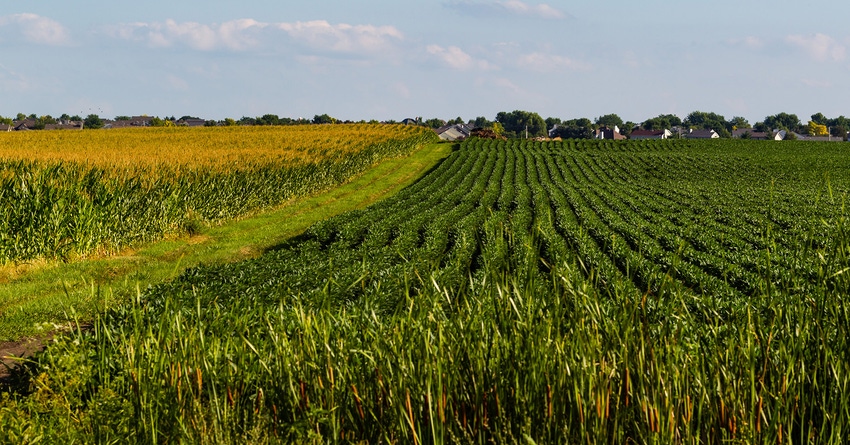September 28, 2022

For years farmers who wanted to adopt conservation practices on their land have had to figure the ins and outs of government cost-share programs or foot the bill themselves and hope the enhanced soil health and water quality benefits paid off – eventually.
That may be about to change due to an $80-million Climate Smart Agriculture Commodity Program grant from USDA for a three-year pilot program that will pay producers in Arkansas, Minnesota, North Dakota and Virginia $100 an acre or animal unit for those practices.
The program, which was announced by Agriculture Secretary Tom Vilsack on Sept. 14, is one of 70 projects that will receive $3.5 billion in funding from the Inflation Reduction Act for USDA’s Partnerships for Climate Smart Commodities Initiative. It represents a new way of thinking about conservation programs.
“The pilot program is excellent validation that it is totally reasonable for producers to achieve a hundred dollars per acre or animal unit payment for these practices,” said Aliza Drewes, executive director of the Rural Investment to Protect our Environment or RIPE, a farmer-led organization that has advocated paying farmers for conservation efforts.
“And, although no one else is talking about that on a national scale other than RIPE, USDA did validate that it’s a very reasonable approach to compensate for climate, as well as water and soil health benefits, to the tune of $80 million dollars. We are excited to help producers understand that this is to a scale we can look towards as we think about designing a national program.”
Partnering organizations
Along with Virginia Tech University, the lead applicant on the project, RIPE will be partnering with farm organizations including the Agricultural Council of Arkansas, Arkansas Rice Federation, Minnesota Farmers Union, Minnesota Soil Health Coalition, Minnesota State Cattlemen’s Association and the National Black Grower’s Council on the pilot project.
State lead organizations will include the Arkansas Department of Agriculture Natural Resources Division, Minnesota Board of Water and Soil Resources, North Dakota Farmers Union and the Virginia Department of Conservation and Recreation.
“Farmers want to hand a healthy farm down to the next generation, and the RIPE100 approach will help,” said Curt Mether, RIPE board president and a farmer from Iowa. “I am excited to put our principles of paying producers fairly for voluntary conservation in action and look forward to seeing the outcome.”
Gaining traction
Mether, other farmers and former USDA leaders have been working for years to gain traction for the idea that more farmers would participate in conservation programs if they were offered equitable payments above the costs associated with implementing those practices.
As an example, research shows planting a cover crop to help farmers capture and sequester more carbon in their soils can cost from $60 to $70 per acre for the costs of seed, planting and terminating the cover crop.
RIPE leaders say $100 an acre would cover those costs and compensate producers for the risks they incur if adverse weather conditions and other factors lead to planting delays for the commercial crop. A similar scenario could apply to rice growers who adopt alternate wetting and drying or furrow-irrigated cropping techniques that reduce methane gas emissions.
What can farmers expect once USDA completes the initial paperwork and begins taking applications from growers in the four states?
“The program is committed to every producer qualifying, so there’s no ranking of applications,” said Drewes. “Because funding is limited, applicants will be randomly selected from conservation districts based on diversity of farmers and livestock producers.
“These conservation districts will put out the word to producers. There will also be outreach dedicated to reaching historically underserved or socially disadvantaged producers to make sure there's equitable access to the funding. Then there will be an application period where anyone in those districts can apply.”
Upfront payment
If an application is accepted, the producer will receive part of the payment up front. Each grower will participate in a workshop on climate smart agricultural practices and pick those they think are relevant to their farming operation.
“There’s a list of 40 or 50 practices we’ve identified that are delivering $100 or more of public benefits,” she said. “So each producer can pick whichever one works for them. Technical assistance will be available through Extension and conservation district specialists and private, third-party crop advisers.
“Technical assistance will be available, but not required so we can get moving and create a program that’s nationally scaled quickly, doesn’t require farmers to do extra hurdles but has support when farmers want it.”
With USDA having to establish the framework for 70 new pilot projects the timeline for any of them is uncertain, although RIPE and its partners are hopeful the $100 per acre or animal unit payments can be available in time for the next growing cycle.
“Once USDA signs the paperwork we’ll be convening the state lead organizations, producer groups and Virginia Tech to create the final application and website and other details,” she said, “and then start doing outreach over the winter to let folks know about the opportunities. I think it’s possible we could have some payments going out in the spring.”
Payment s will be available to producers who have implemented those conservation practices in the past. “The program is specifically designed to not penalize early adopters,” she said. “Our RIPE100 allows early adopters to apply and have an equal chance of being selected at random in the pilot stage,” she noted.
“Once it gets developed at the national level everyone who wants to participate would automatically be enrolled. The reason we can credibly do that is we’re not proposing a private market trading mechanism in which you have to demonstrate the additional reduction. What we’re saying is that from a public benefit perspective it makes sense to reward producers for doing the right thing and fairly compensate them.”
About the Author(s)
You May Also Like






